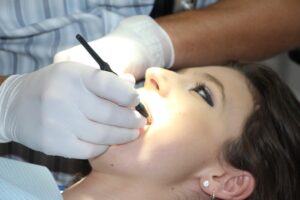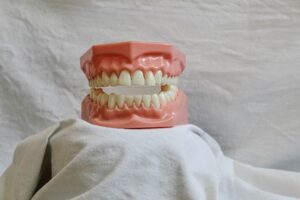Orthofacial surgery and orthognathic surgery are specialized fields within maxillofacial surgery that focus on the treatment of facial deformities, jaw misalignments, and other craniofacial issues. While these terms are often used interchangeably, they represent different approaches and scopes of practice in addressing facial abnormalities.
Orthofacial Surgery
Orthofacial surgery is a relatively newer and evolving field that integrates principles from both orthodontics and maxillofacial surgery. It aims to provide comprehensive treatment for facial deformities, focusing on both aesthetic and functional outcomes. This multidisciplinary approach combines the alignment of teeth and the correction of skeletal discrepancies to achieve harmonious facial proportions and optimal dental function.
Key aspects of orthofacial surgery include:
- Holistic Treatment Planning: Orthofacial surgery involves a coordinated approach between orthodontists and maxillofacial surgeons to address both dental and skeletal issues. The goal is to create a treatment plan that ensures the best functional and aesthetic results.
- Facial Aesthetics: Emphasis on improving facial harmony and symmetry, taking into account the overall facial structure and its relation to dental alignment.
- Functional Improvements: Addressing issues related to bite, chewing, speaking, and breathing. This may involve surgical intervention to correct jaw discrepancies and orthodontic treatment to align the teeth.
- Advanced Techniques: Utilization of cutting-edge technologies such as 3D imaging and computer-aided design to plan and execute precise surgical procedures.
- Bimaxillary surgery: Since orthofacial surgery seeks the ideal aesthetic result it is necessary to operate on both jaws. Ideal upper incisor position and hence upper jaw position will dictate the position of the mandible. The movements to reach the ideal position of the jaws implies a rotation of the maxilo-mandibular complex in counter clockwise or clockwise fashion, depending on the facial profile.
- Ancilliary procedures: are often performed simultaneously to orthofacial surgery, such as rhinoplasty, genioplasty, fat grafting, blepharoplasty or custom made peek implants placement.
Orthognathic Surgery
Orthognathic surgery, a well-established subset of maxillofacial surgery, specifically focuses on the surgical correction of jaw and facial bone misalignments. This type of surgery is typically recommended when orthodontic treatment alone cannot correct severe bite issues and facial imbalances.
Key aspects of orthognathic surgery include:
- Jaw Realignment: Surgical repositioning of the upper jaw (maxilla), lower jaw (mandible), or both to correct misalignments. This aims to improve bite function and facial aesthetics.
- Bite Correction: Treating malocclusions such as overbite, underbite, crossbite, and open bite, which can affect chewing, speaking, and overall oral health.
- Collaboration with Orthodontics: Orthognathic surgery often involves a multidisciplinary team, including orthodontists, to ensure proper alignment of teeth before and after surgery.
- Post-Surgical Adjustments: Follow-up orthodontic treatment is usually necessary to fine-tune the alignment of teeth and ensure long-term stability of the surgical outcomes.
Key Differences
- Scope of Practice: Orthofacial surgery offers a more integrated approach, combining orthodontic and surgical principles to address both dental and facial skeletal issues comprehensively. Orthognathic surgery, while collaborative with orthodontics, is primarily focused on surgical correction of jaw alignment.
- Treatment Focus: Orthofacial surgery aims to achieve both aesthetic and functional improvements by considering the entire facial structure. Orthognathic surgery is more focused on correcting functional bite problems and specific jaw misalignments.
- Techniques and Technology: Orthofacial surgery often utilizes advanced imaging and planning technologies to ensure precise and comprehensive treatment. Orthognathic surgery also employs these technologies but is more centered on the surgical aspect of jaw correction.
- Outcomes: Orthofacial surgery emphasizes achieving a balanced facial appearance alongside improved dental function. Orthognathic surgery primarily aims to correct bite and jaw issues, with secondary benefits to facial aesthetics.
In conclusion, orthofacial surgery and orthognathic surgery, while overlapping in some areas, have distinct approaches and goals. Orthofacial surgery provides a holistic, integrated treatment plan that addresses both dental and facial skeletal issues, while orthognathic surgery focuses on the surgical correction of jaw misalignments to improve bite function and facial balance. Understanding these differences allows for better-informed decisions when seeking treatment for complex craniofacial conditions.
Article written by the Birbe Editorial Committee



